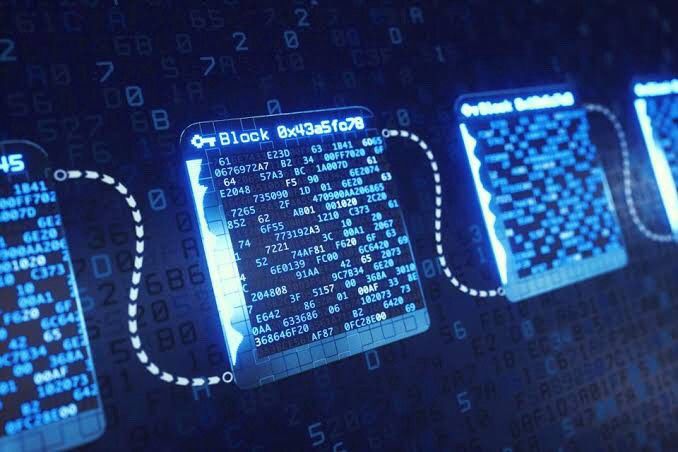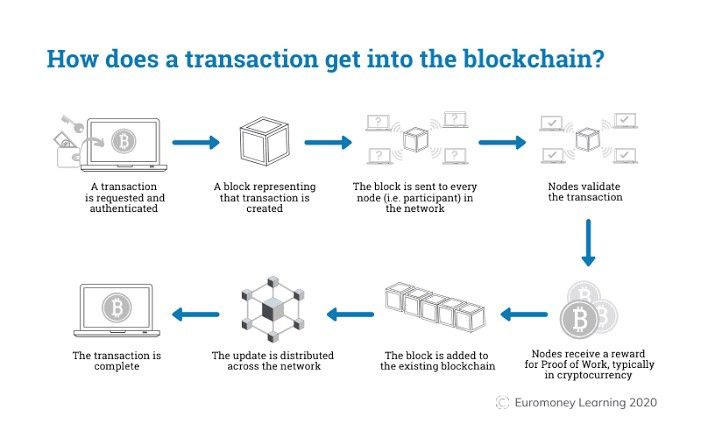
BYDFi is a cryptocurrency trading platform for global investors. It has continued to bring professional, convenient and new trading services to global users since 2019.
The Blockchain Technology

What Is a Blockchain?
A blockchain is a distributed database that is shared among the nodes of a computer network. As a database, a blockchain stores information electronically in digital format. Blockchains are best known for their crucial role in cryptocurrency systems, such as Bitcoin, for maintaining a secure and decentralized record of transactions. The innovation with a blockchain is that it guarantees the fidelity and security of a record of data and generates trust without the need for a trusted third party.
One key difference between a typical database and a blockchain is how the data is structured. A blockchain collects information together in groups, known as blocks, that hold sets of information. Blocks have certain storage capacities and, when filled, are closed and linked to the previously filled block, forming a chain of data known as the blockchain. All new information that follows that freshly added block is compiled into a newly formed block that will then also be added to the chain once filled.
A database usually structures its data into tables, whereas a blockchain, like its name implies, structures its data into chunks (blocks) that are strung together. This data structure inherently makes an irreversible time line of data when implemented in a decentralized nature. When a block is filled, it is set in stone and becomes a part of this time line. Each block in the chain is given an exact time stamp when it is added to the chain.
How Does a Blockchain Work?
The goal of blockchain is to allow digital information to be recorded and distributed, but not edited. In this way, a blockchain is the foundation for immutable ledgers, or records of transactions that cannot be altered, deleted, or destroyed. This is why blockchains are also known as a distributed ledger technology (DLT).
Blockchain Transaction Processes:

Blockchain Decentralization
Imagine that a company owns a server farm with 10,000 computers used to maintain a database holding all of its client’s account information. This company owns a warehouse building that contains all of these computers under one roof and has full control of each of these computers and all of the information contained within them. This, however, provides a single point of failure. What happens if the electricity at that location goes out? What if its Internet connection is severed? What if it burns to the ground? What if a bad actor erases everything with a single keystroke? In any case, the data is lost or corrupted.
What a blockchain does is to allow the data held in that database to be spread out among several network nodes at various locations. This not only creates redundancy but also maintains the fidelity of the data stored therein — if somebody tries to alter a record at one instance of the database, the other nodes would not be altered and thus would prevent a bad actor from doing so. If one user tampers with Bitcoin’s record of transactions, all other nodes would cross-reference each other and easily pinpoint the node with the incorrect information. This system helps to establish an exact and transparent order of events. This way, no single node within the network can alter information held within it.
How Transparent Is The Blockchain Technology?
Because of the decentralized nature of Bitcoin’s blockchain, all transactions can be transparently viewed by either having a personal node or using blockchain explorers that allow anyone to see transactions occurring live. Each node has its own copy of the chain that gets updated as fresh blocks are confirmed and added. This means that if you wanted to, you could track Bitcoin wherever it goes.
How Secured Is The Blockchain?
Blockchain technology achieves decentralized security and trust in several ways. To begin with, new blocks are always stored linearly and chronologically. That is, they are always added to the “end” of the blockchain. After a block has been added to the end of the blockchain, it is extremely difficult to go back and alter the contents of the block unless a majority of the network has reached a consensus to do so. That’s because each block contains its own hash, along with the hash of the block before it, as well as the previously mentioned time stamp. Hash codes are created by a mathematical function that turns digital information into a string of numbers and letters. If that information is edited in any way, then the hash code changes as well.
Bitcoin And Blockchain

Blockchain technology was first outlined in 1991 by Stuart Haber and W. Scott Stornetta, two researchers who wanted to implement a system where document timestamps could not be tampered with. But it wasn’t until almost two decades later, with the launch of Bitcoin in January 2009, that blockchain had its first real-world application.1
The Bitcoin protocol is built on a blockchain. In a research paper introducing the digital currency, Bitcoin’s pseudonymous creator, Satoshi Nakamoto, referred to it as “a new electronic cash system that’s fully peer-to-peer, with no trusted third party.”2
The key thing to understand here is that Bitcoin merely uses blockchain as a means to transparently record a ledger of payments, but blockchain can, in theory, be used to immutably record any number of data points. As discussed above, this could be in the form of transactions, votes in an election, product inventories, state identifications, deeds to homes, and much more.
Currently, tens of thousands of projects are looking to implement blockchains in a variety of ways to help society other than just recording transactions — for example, as a way to vote securely in democratic elections. The nature of blockchain’s immutability means that fraudulent voting would become far more difficult to occur. For example, a voting system could work such that each citizen of a country would be issued a single cryptocurrency or token. Each candidate would then be given a specific wallet address, and the voters would send their token or crypto to the address of whichever candidate for whom they wish to vote. The transparent and traceable nature of blockchain would eliminate both the need for human vote counting and the ability of bad actors to tamper with physical ballots.
How Are Blockchains Used?
As we now know, blocks on Bitcoin’s blockchain store data about monetary transactions. Today, there are more than 10,000 other cryptocurrency systems running on blockchain. But it turns out that blockchain is actually a reliable way of storing data about other types of transactions as well.
Some companies that have already incorporated blockchain include Walmart, Pfizer, AIG, Siemens, Unilever, and a host of others. For example, IBM has created its Food Trust blockchain to trace the journey that food products take to get to their locations.
What Currency Does Blockchain Entails?
Blockchain forms the bedrock for cryptocurrencies like Bitcoin. The U.S. dollar is controlled by the Federal Reserve. Under this central authority system, a user’s data and currency are technically at the whim of their bank or government. If a user’s bank is hacked, the client’s private information is at risk. If the client’s bank collapses or the client lives in a country with an unstable government, the value of their currency may be at risk. In 2008, several failing banks were bailed out — partially using taxpayer money. These are the worries out of which Bitcoin was first conceived and developed.
By spreading its operations across a network of computers, blockchain allows Bitcoin and other cryptocurrencies to operate without the need for a central authority. This not only reduces risk but also eliminates many of the processing and transaction fees. It can also give those in countries with unstable currencies or financial infrastructures a more stable currency with more applications and a wider network of individuals and institutions with whom they can do business, both domestically and internationally.
Benefits of Blockchains:
- Accuracy Of The Chain
- Cost Reduction
- Decentralization
- Efficient Transactions
- Private Transactions
- Secured Transactions
- Transparency
- Banking The Unbanked
Who Invented Blockchain?
Blockchain technology was first outlined in 1991 by Stuart Haber and W. Scott Stornetta, two mathematicians who wanted to implement a system where document timestamps could not be tampered with In the late 1990s, cypherpunk Nick Szabo proposed using a blockchain to secure a digital payments system, known as bit gold (which was never implemented).
__________________________
BitYard Exchange: BitYard.com
Customer Support: Support@bityard.exchange
Business Request: levi@bityard.exchange
BitYard Telegram Communities
BitYard News & Events — https://t.me/BITYARDNEWS
English — https://t.me/BityardEnglish
Vietnamese — https://t.me/BitYardVietNamChat
Indonesian — https://t.me/bityardindonesia
Philippines — https://t.me/BityardPhilippines
BitYard Official Social Media
Youtube — https://www.youtube.com/c/BityardOfficial/
Facebook — https://www.facebook.com/Bityardofficial
Twitter — https://twitter.com/Bityard_Global
Medium — https://medium.com/bityard
Platforms BitYard Settled in
Coincodex — https://coincodex.com/exchange/bityard
Coinpaprika — https://coinpaprika.com/exchanges/bityard/
CryptoAdventure — https://cryptoadventure.com/discover/exchanges
喜欢我的文章吗?
别忘了给点支持与赞赏,让我知道创作的路上有你陪伴。
发布评论…